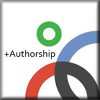The Web Pro's Guide to Authorship Markup

Web professionals immediately embraced Google authorship markup, despite kind of being a tricky way to convince people to join Google+, when it was unveiled in 2011.
In case you're still (somehow) unfamiliar with authorship markup, just know that it is a Google-specific microdata set that utilizes the rel=author tag to enhance tagged Web pages when they appear in Google's search engine results pages (SERPs). To the casual user, these markups can be identified by the little author portraits that appear next to certain Web pages on Google Search and link to the author's Google+ page. You can learn more about how to implement a rel=author tag in "The Difference Between rel=author & rel=publisher."
It makes sense that Internet professionals would want to take advantage of these tags as much as possible, because markup doesn't really require any additional work once it's been implemented, but it can provide an incredible boost when it comes to driving search traffic.
--> Read the Web Pro's Guide to Authorship Markup Now









